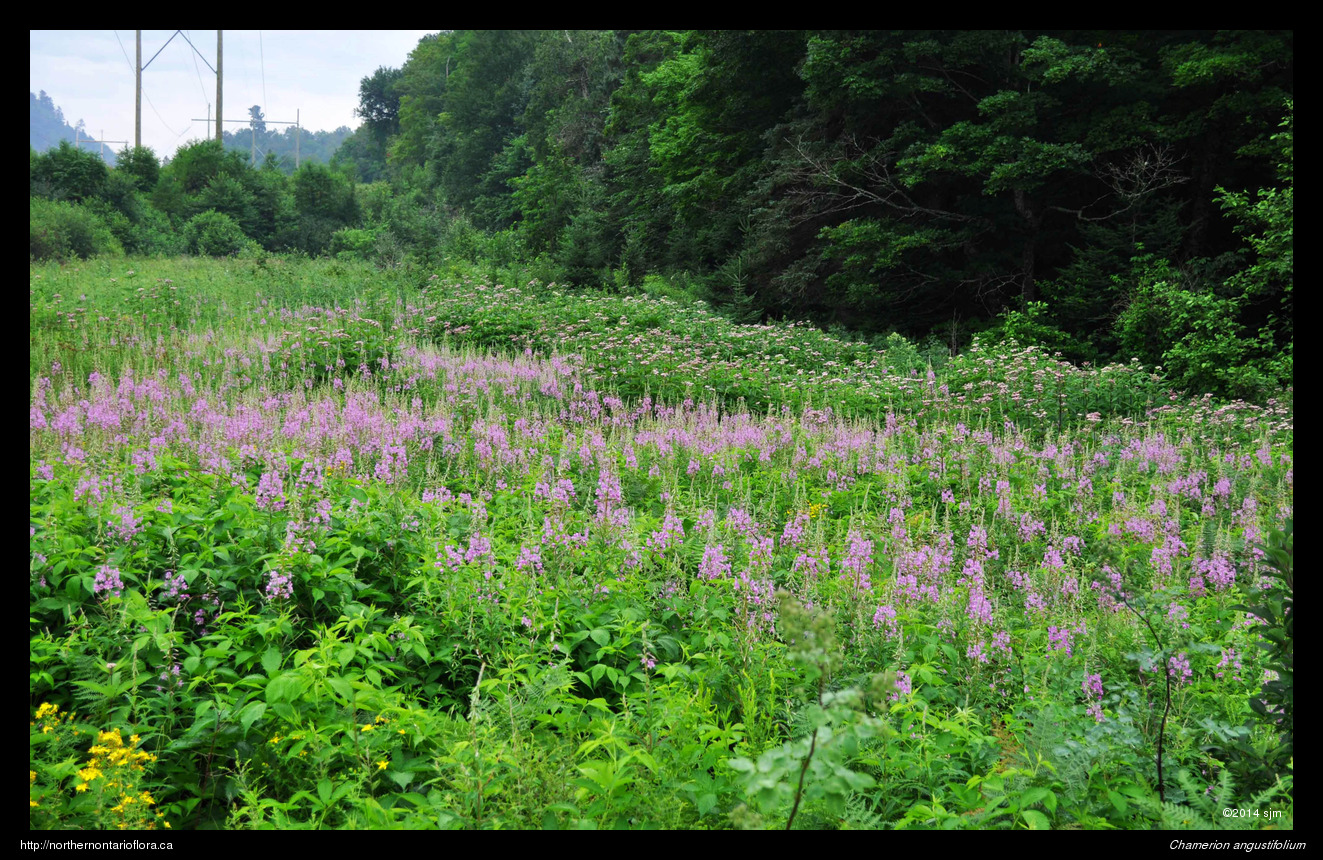
|
Northern Ontario Plant Database 
Plant DescriptionChamaenerion angustifolium (L.) Scop.En: fireweed, great willowherb, French willow
Onagraceae (Evening-primrose Family) General: An erect perennial, 1-2 m tall, forming extensive colonies from spreading underground rhizomes, especially in old burn. Above ground stems are smooth (glabrous), unbranched, and very leafy. Leaves: Alternate, simple, pinnately-veined, and sessile. Leaves are narrowly elliptic to lanceolate, 5—20 cm long by 0.5—3.5 cm wide, and taper gradually to narrow bases and sharply pointed (acuminate) apices; margins are entire to slightly wavy. The midrib of the blade is pale and prominent on the lower surface; secondary veins are numerous and closely spaced. Leaves are green above and slightly paler beneath; in autumn, leaves turn an attractive range of orange to red colours. Flowers: Numerous flowers are borne in elongate terminal inflorescences (racemes), to 7.5 dm long. Flowers bloom from the base upward, buds are pendant, but flowers are held at about right angles to the stem. Flowers are about 4 cm wide and have 4 narrowly lanceolate to oblanceolate calyx lobes, each 8—12 mm long, and 4 ovate to obovate rose to light purple (rarely white) petals, each 8—20 mm long. Stamens are 8, with white filaments and purplish anthers; the single pistil is composed of a finely hairy inferior ovary, with a 1—2 cm long style that extends beyond the stamens. The stigma has 4 pale branches that are held together and face forward when the flower first opens. As the flower matures, the stigma lobes spread outward into a cross-shaped pattern, then coil backward as the flowers fade. Fireweed flowers are insect pollinated. Fruit: Elongate, narrowly cylindrical, dry fruit (capsules), 5—8 cm long, and reddish-purple, tapering gradually to a flat tip. The finely hairy capsules split along 4 lines, with each segment curling backward to release 100s of tiny wind-dispersed seeds, each ending in a small tuft of silky hairs. Habitat and Range: Open disturbed areas, such as old burns, recent clearcuts, open fields, and roadsides. Fireweed is circumboreal in distribution and occurs in all Provinces of Canada; it is found throughout the Algoma District and Ontario. Similar Species: Fireweed leaves are similar in shape to those of several willow (Salix) species, but willows have woody stems, small catkin-like flowers, and small ovoid or pear-shaped (pyriform) capsules. Fireweed leaves are also similar to several aster or goldenrod species when young, but the secondary veins of fireweed leaves are very numerous, close together, and oriented nearly perpendicular to the midrib, especially in the lower half of the leaf. Back to species list |
||||||||||||||||||||||






















